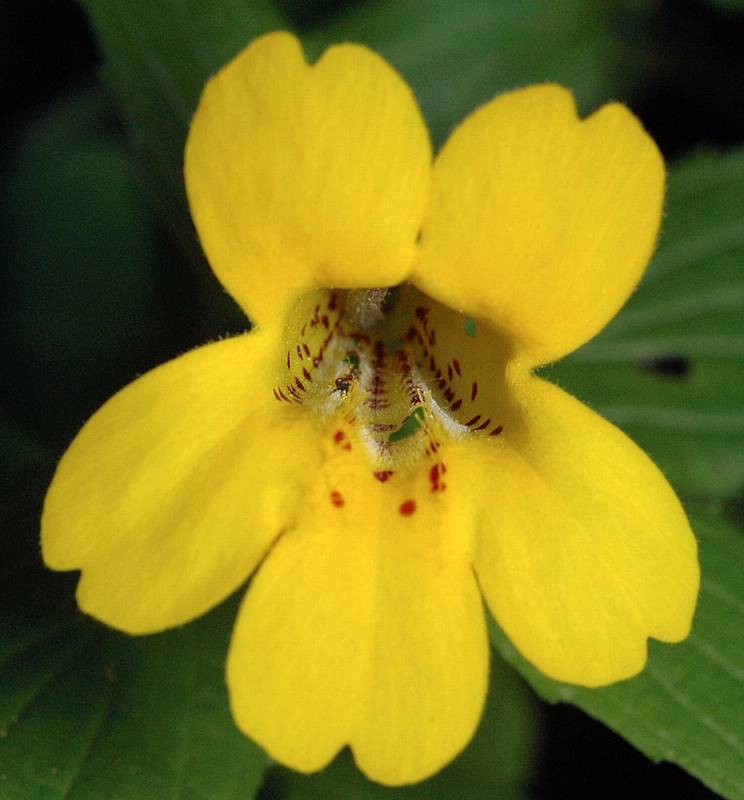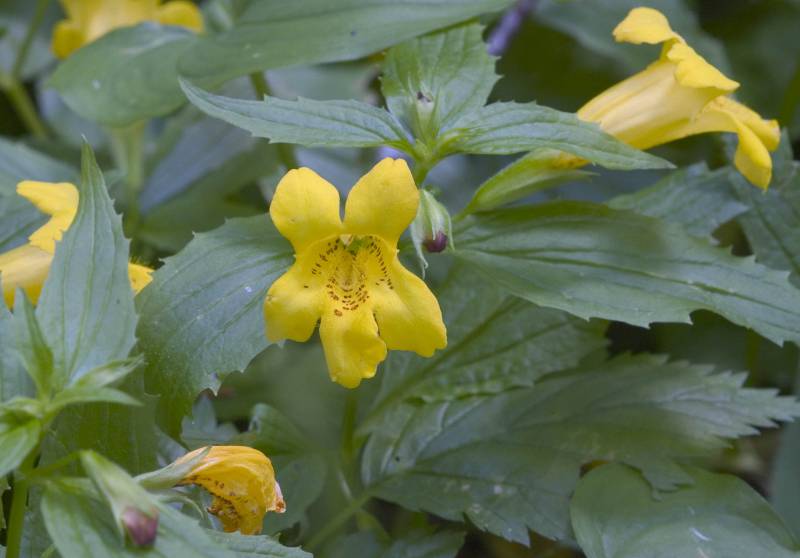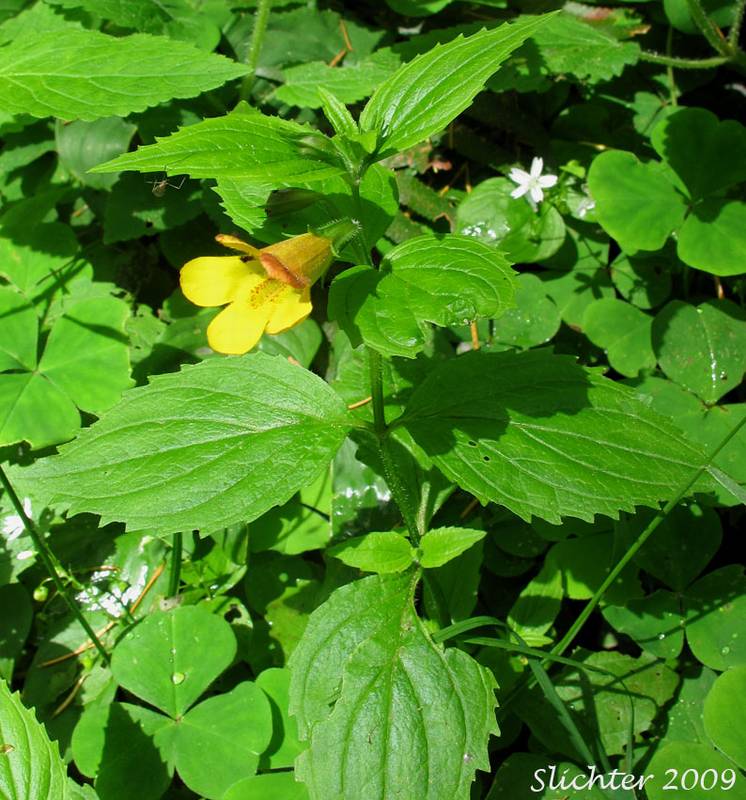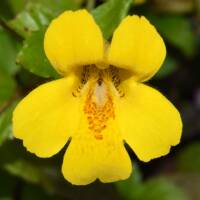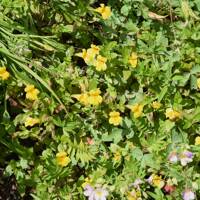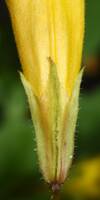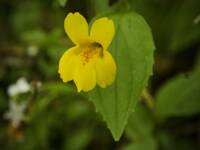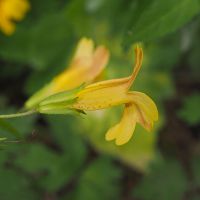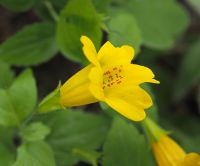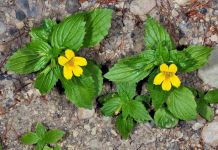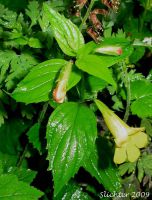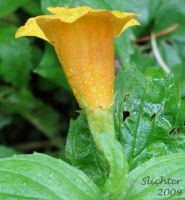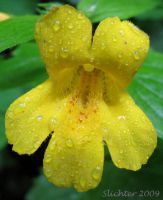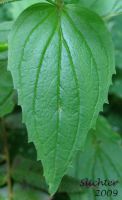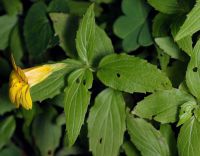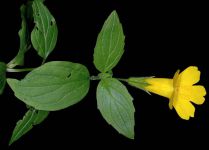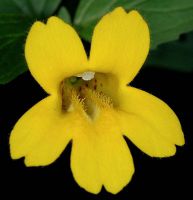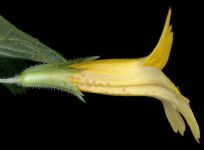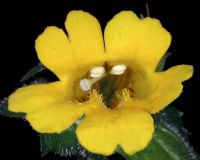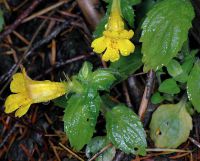Distribution: Occurring west of the Cascades crest in Washington; southwestern British Columbia to northern California.
Habitat: Stream banks and other moist places to wet places from the lowlands to middle elevations in the mountains.
Flowers: May-September
Origin: Native
Growth Duration: Perennial
Conservation Status: Not of concern
Perennial from well-developed, shallow rhizomes, the stems ascending or loosely erect, 1-4 dm. tall, the herbage with stiff, white hairs.
Leaves opposite, serrate, pinnately veined, but the principle lateral veins arising below the middle; leaf blades lance-elliptic to ovate, acute, the lower short-petiolate, the upper sessile, 2-7 cm. long and 1-3.5 cm. wide.
Flowers few, solitary in the leaf axils, on long pedicels; calyx 8-16 mm. long, 5-angled with spreading hairs along the ribs, the 5 teeth acute, 2-5 mm. long; corolla 2.5-4 cm. long, bilabiate, yellow, the long, strongly-flaring throat often red-dotted, the 5 well-developed lobes sometimes washed with reddish-purple; stamens 4.
Capsule.
Publication: Phytoneuron 2012-39: 1–60. 2012.
PNW Herbaria: Specimen records of Erythranthe dentata in the Consortium of Pacific Northwest Herbaria database
WA Flora Checklist: Erythranthe dentata checklist entry
OregonFlora: Erythranthe dentata information
E-Flora BC: Erythranthe dentata atlas page
CalPhotos: Erythranthe dentata photos

